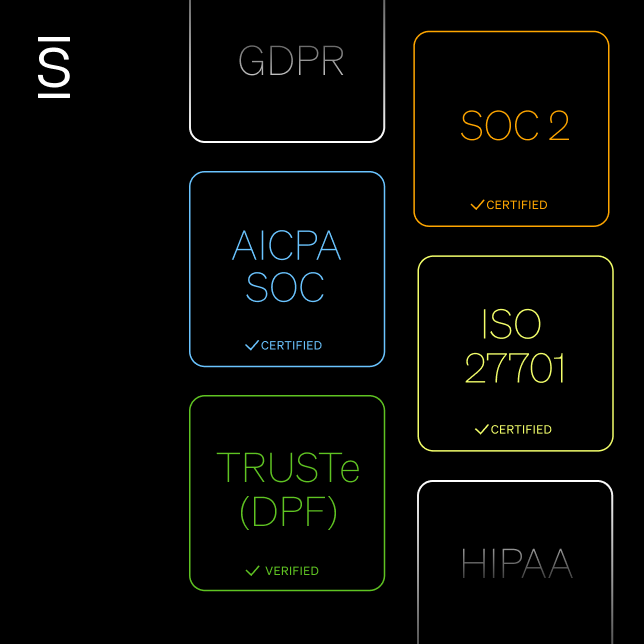It is a testament to the tech and communications industry that our leaders are coming from non-obvious fields. Many of our best and brightest are pivoting their careers into internal comms and communications, bringing an abundance of experience and vast knowledge to better their companies and employees. One of the standouts is Jill Stracko, Director of Global Executive and Internal Comms at Uber. Jill was recently interviewed by Amanda Berry, Manager of Corporate Brand & Communications and Head of Internal Communications at Simpplr, for The Cohesion Podcast episode #13.
The Constant Thread of Writing
Jill’s introduction to communications was not the usual pathway. She started in politics by working for then-Senator Joe Biden’s team. Later, she became head of President Barack Obama’s writing department. But she never thought of her “communications” journey as an obvious one.
Jill realized that writing had been the constant thread that connected all her jobs. It is a consistent part of her professional career. Being a good communicator is core to being a good writer. It is the foundation of everything a writer does. For Jill, there was not one singular thing that convinced her to get into communications. Still, she did enjoy everything about the industry, and the job path presented itself along with opportunities. Like many others, Jill also acknowledged that her career was not linear.
“You know, everyone’s career path is not linear,” Jill affirmed. “So, every job that I’ve had has had writing and communications in it. And every job that I will have will include that too.”
The progression from the head of President Obama’s writing department to Jill’s current role as Director of Global Executive and Internal Communications at Uber is quite the transition. Just the departure from government into tech is remarkable. But that leap led to where she is today.
A Scrappy Team With Three Core Principles
At Uber, Jill and her team are responsible for communications that go to all full-time, worldwide employees at the company. “We have a global team,” Jill shared, describing her team. “We’re scrappy, as many internal communications teams are.”
The team manages the communication channels with an underlying understanding and a core set of principles. The first is to inform and inspire employees, ensuring everyone understands what’s going on within the company. An informed employee has an easier time doing their job, especially If they understand how decisions are being made at their place of work.
As for inspiring employees, Jill said that stories are an integral part of the process. “You really want people always to be reminded of why they came to work at this company and why it’s amazing,” Jill shared. She tries to find stories that motivate employees, such as showcasing innovations occurring around the company.
The second principle is what Jill refers to as “connecting the dots.” She described internal communications‘ critical responsibility as “Making sure that you remind people how their day-to-day work fits into the company strategy.” She believes that it helps set the priorities for the year and align them with the company mission and values. While many may believe this is leadership’s responsibility. Jill is committed to helping leaders give employees the recall of the greater picture and knowing their place in the achievement of company goals. She is a leader, helping other leaders.
The final part of the core principles is that internal comm’s work should not be a regurgitation of something put out externally. That would include information from a marketing blog post or something in a news story. Internal communications, according to Jill, are different in their goal and effect. Therefore, it should be different from external communications.
“I like to think of it, as our work, as you should get this information because you work at this company and you’re getting the inside scoop, the behind-the-curtain view,” Jill stated. “The story behind the story.”
A Love for the Oxford Comma
There is an ongoing argument amongst writers about the use of the Oxford comma. For those of you who do not understand, the serial or Oxford comma is used after the last word, term, or phrase in a series used in the English language. It is followed by the conjunction word ‘and.’ Its purpose is to bring clarity to the sentence. For example, this magazine cover insisted that “Rachel Ray finds inspiration in cooking her family and her dog.” If the Oxford comma had been used, Rachel’s family and her dog would have been saved from certain demise.

The controversy stems from the serial comma originating from the Oxford University Press Style and is largely optional in American writing style guides. However, the serial comma’s purpose is to remove any ambiguity and, in the example given, saves lives.
Amanda and Jill have strong feelings about this, especially when others wish to edit the Oxford out of the comma. Other writers could lament over a single word and punctuation. Yet, they both feel the Oxford comma is necessary and the “way to go” in writing to alleviate the risk of misinterpretation. Many may see these issues singularly as grammatical rules that often seem unnecessary and pointless. It actually speaks to a higher issue than Jill brought to light—diplomacy.
“You always have to be diplomatic when you strongly disagree with someone,” Jill explained. “So it’s even tougher when you’re writing for someone, and you see them take it (the Oxford comma) out.”
Diplomacy in communication? Again, it is a demonstration of the non-linear aspect of communication. If anyone understood this issue, it would be Jill. Her background in politics and government brings a greater comprehension of the inner workings of any organization. Given that Jill is a communication leader with a writer’s heart, she, of all people, knows that compromise has its purpose and its limitations.
“I don’t know. I love it (the Oxford comma). Some people feel like it’s not necessary, and it kind of crowds the page. I feel like it brings a lot of clarity to everything that you write.”
Clarity should be at the center of every communication motion. And Jill wants that for every employee and leader. Your communications tactics and strategy should reflect your company’s culture while building transparency, trust, and integrity between leaders and employees. That is admirable for any company to pursue.
To hear more about Jill’s ideas about this and employee experience, listen to this podcast and others on Simpplr’s Cohesion Podcast website. It is also available on Spotify and Apple Podcasts.




















